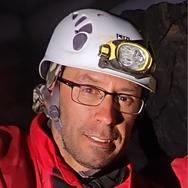Advances in Remote Sensing in Glacial and Periglacial Geomorphology
A special issue of Remote Sensing (ISSN 2072-4292). This special issue belongs to the section "Remote Sensing in Geology, Geomorphology and Hydrology".
Deadline for manuscript submissions: 30 June 2024 | Viewed by 7955
Special Issue Editors
Interests: geodesy; cartography; photogrammetry; cultural heritage; glacier movement; coastal regression
Special Issues, Collections and Topics in MDPI journals
Interests: geomorphology; ice caves; glacial and periglacial processes and morphologies; mountain environments; cartography and mapping; coastal geomorphology
Special Issue Information
Dear colleagues,
Processes related to cold environments are very dynamic and are changing rapidly under the influence of climate and global changes. The systematic and precise control of processes involved in the disappearance of ice in the cryosphere, the glacial and periglacial processes and the degradation of permafrost is needed. They are also important to know in order to determine the magnitude of these changes' consequences, such as on hydrology, vegetation, ecosystems and landscapes, or their potential risks. Remote sensing allows for these processes to be effectively controlled in different environments, and a wide variety of techniques—InSar, LIDAR, TLS, GPS-RTK, SfM—enable their active tracking and monitoring. Recent technological advances and their applications in different environments are contributions of the first order both to the advancement of knowledge of earth surface dynamics and the varying responses to anthropogenic changes.
Aim of the Special Issue and how the subject relates to the journal scope.
This Special Issue focuses on contributions to the knowledge of changes in the cryosphere through the application of remote sensing. The main aim is the application of remote sensing to the retreat and disappearance of glaciers; the dynamics, velocity and volume changes in rock glaciers and ice caves; the changes in processes related to permafrost; and the degradation of ice in the cryosphere in any modality. These processes are analysed using varies techniques of remote sensing, applied individually or combined, to learn the behaviour of ice on Earth.
This focus fits the aim of the journal as a monograph focused on applied studies of the cryosphere by means of multi-spectral and hyperspectral remote sensing; lidar and laser scanning; geometric reconstruction; change detection; image processing and pattern recognition; operational processing facilities; spaceborne, airborne and terrestrial platforms; and remote sensing applications.
Suggested themes and article types for submissions.
Themes:
- Glacier retreat in mountain and polar environments;
- Demise of small glaciers;
- Rock glacier inventory;
- Rock glacier kinematic;
- Rock glacier velocity;
- Permafrost related processes;
- Ice caves inventory;
- Ice caves mass balances;
- InSAR techniques;
- Digital Photogrammetry Techniques;
- UAV surveys;
- Geodetic Mass Balances;
- TLS techniques.
Types:
Reviews, cases and research articles.
Prof. Dr. José Juan de Sanjosé Blasco
Dr. Manuel Gómez Lende
Prof. Dr. Enrique Serrano Cañadas
Guest Editors
Manuscript Submission Information
Manuscripts should be submitted online at www.mdpi.com by registering and logging in to this website. Once you are registered, click here to go to the submission form. Manuscripts can be submitted until the deadline. All submissions that pass pre-check are peer-reviewed. Accepted papers will be published continuously in the journal (as soon as accepted) and will be listed together on the special issue website. Research articles, review articles as well as short communications are invited. For planned papers, a title and short abstract (about 100 words) can be sent to the Editorial Office for announcement on this website.
Submitted manuscripts should not have been published previously, nor be under consideration for publication elsewhere (except conference proceedings papers). All manuscripts are thoroughly refereed through a single-blind peer-review process. A guide for authors and other relevant information for submission of manuscripts is available on the Instructions for Authors page. Remote Sensing is an international peer-reviewed open access semimonthly journal published by MDPI.
Please visit the Instructions for Authors page before submitting a manuscript. The Article Processing Charge (APC) for publication in this open access journal is 2700 CHF (Swiss Francs). Submitted papers should be well formatted and use good English. Authors may use MDPI's English editing service prior to publication or during author revisions.
Keywords
- cryosphere
- glaciers
- rock glaciers
- ice caves
- permafrost degradation
- remote sensing techniques







